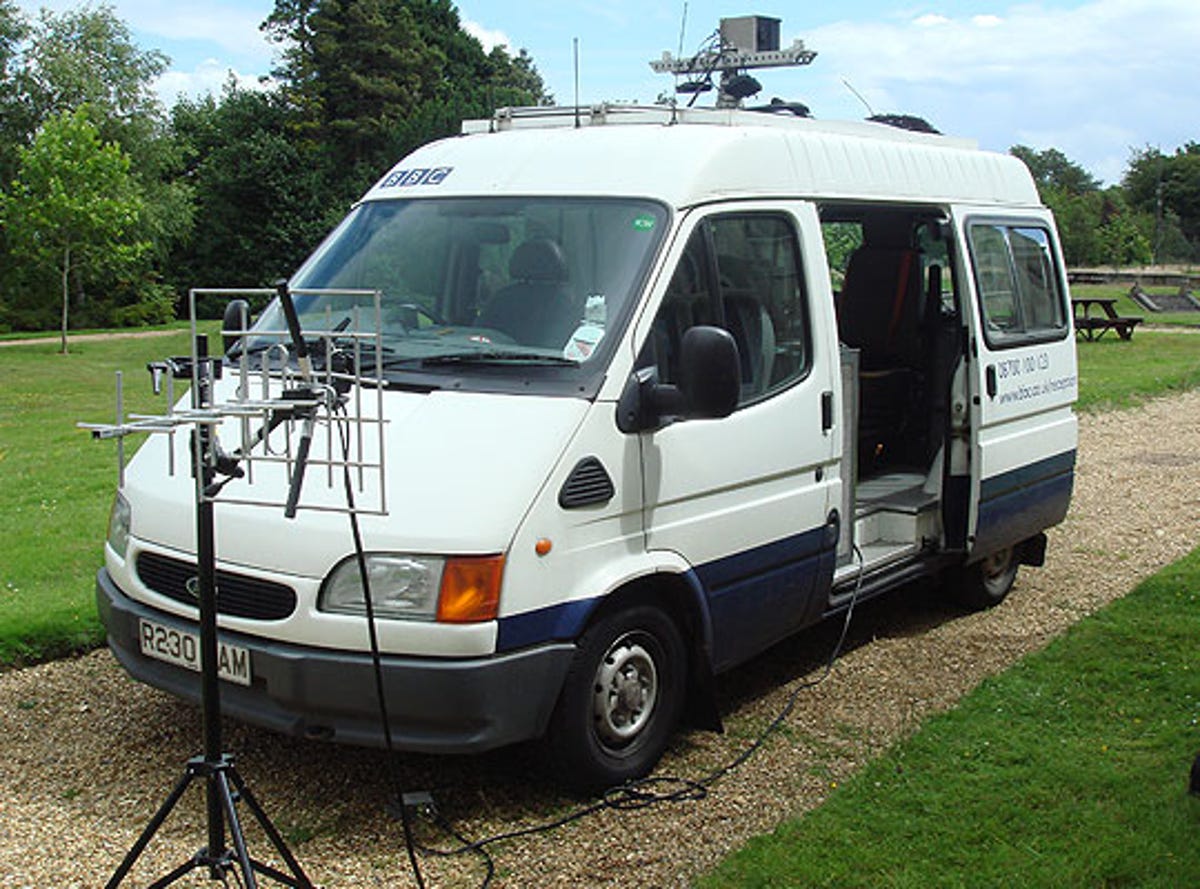
We recently looked at a BBC R&D white paper about using MIMO to transmit high-definition TV using the space left over from the analogue switch-off. As a result, we were invited to go along to Kingswood Warren, the home of BBC R&D, to see a demonstration of the system.
Kingswood is home to BBC research into technologies that will eventually become commonplace in our living rooms. It was here that Teletext and Nicam sound were developed. It’s an incredibly important place, because it informs the corporation’s opinion on which new technologies to employ and enables it to put a strong case to the government and regulators about the future direction of broadcasting technology.
To demonstrate the abilities of the system, the team working on this project are transmitting three high-definition signals, encoded at 15Mbps, and one standard-def signal. All three are within one 8MHz UHF channel that would hold just one analogue TV channel. The team claimed it was “pretty simple”. Click through for more pics.


While this may look like something that was knocked up with a bit of coat hanger and a piece of spare wood it’s actually a working transmitter.
In this photo you can see the two sets of elements, set 90 degrees apart from each other. The polarisation of these elements is part of the reason why two sets of data can be sent over the space normally used for one, effectively doubling the capacity of a single channel. While this MIMO stuff isn’t especially new, this is an incredibly simple way to get something for nothing, and it really does work.
Used for very low power tests and demonstrations, it shows how the whole system works and how easy it would be to roll the system out across the country.


The receiving antenna looks a little more sturdy, but once again you can see the two sets of elements offset from each other by 90 degrees.
Normally this antenna would be mounted on top of the van and driven around various test locations, where extensive reception tests would be performed.
If a MIMO system using polarisation were used to broadcast TV in the UK, you would need something like this to replace your existing roof-top aerial, as well as a new set-top box.


The Kingswood team use this van to test the viability of the signal being broadcast at certain times from Guildford. They can switch the transmitter on via a phone link, so it isn’t broadcasting all the time — which means it would be tricky for you to tune into it, even if you had the right equipment.
In this demo, the signal only had to travel a few metres, but for the actual tests in Guildford, this van will travel all over the surrounding area looking for the signal and logging the results in a database.


You can see inside the van the equipment the team use to monitor the tests. From here the team use software that enables them to track where the signal can be received. They log every piece of data they can in order to be able to refer back to it in the future.
You can see an oscilloscope and laptop used for checking the signal quality, as well as a TV for checking the picture visually.
While they’ve been testing, the Kingswood team have been pleased with how well the test setup works, and coverage has been very much what they expected. All of which points to an easy roll-out, if the government ever agrees. Fingers crossed. -Ian Morris




